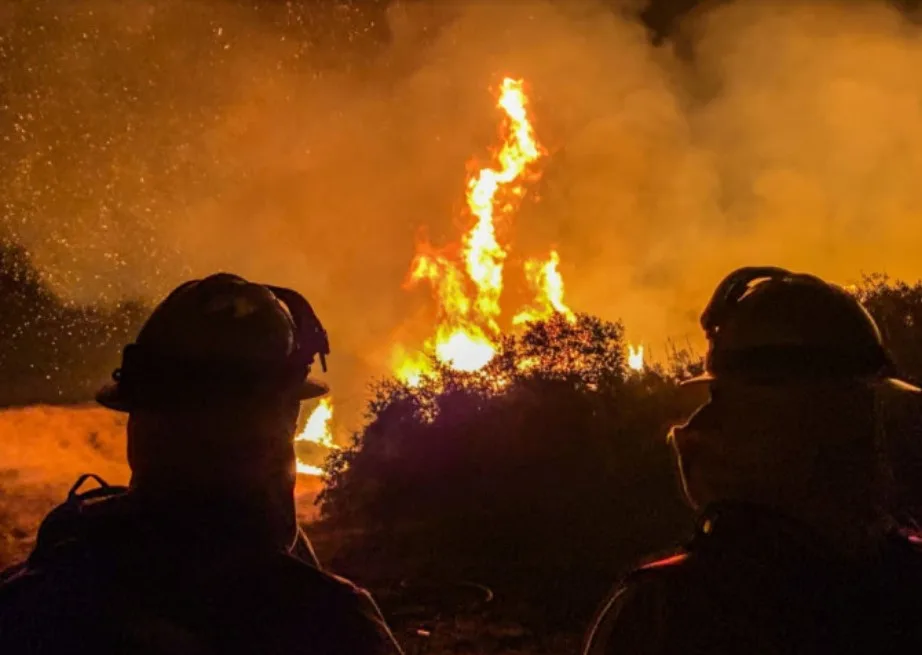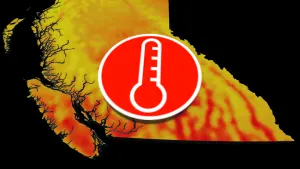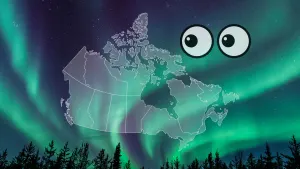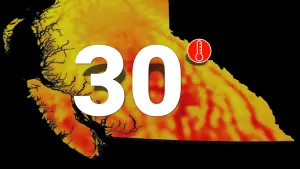
The 2020 Western U.S. wildfire season killed thousands and cost $20 billion
This Day In Weather History is a daily podcast by Chris Mei from The Weather Network, featuring stories about people, communities and events and how weather impacted them.
--
In 2020, wildfires devastated areas across the Western United States. Between July 24 and December 21, 2020, more than 100 fires burnt 4,100,000 ha of land across California, Oregon, and Washington. The wildfires caused 47 direct deaths and between 1,200 and 3,000 indirect deaths. The fires also destroyed 13,887 buildings and caused around $19.884 billion (2020 USD) worth of damages.
North America is wetter in the east along the Atlantic coast and drier in the west along the Pacific coast. This tends to lead to perfect conditions for lightning-sparked wildfires.

Firefighters work to extinguish a fire in Alpine, California, U.S., September 6, 2020, in this picture obtained from social media. Picture taken September 6, 2020. Courtesy of Steve Russo/via REUTERS.
The widespread wildfires started in April. The first two wildfires started in Washington. As of July 5, 2020, the Oregon Department of Forestry officially declared the start of the wildfire season, meaning that unregulated debris burning outdoors must end, which is a major cause of wildfires.

"Smoke from the North Complex Fire settles over San Francisco, turning the midday sky a dark orange on September 9." Courtesy of Christopher Michel/Wikipedia/CC BY 2.0
Between Aug. 14 and 16, recording-breaking heat spread across Northern California. The combination of heat, unstable air, dry fuels, and lightning risk caused the National Weather Service for San Francisco to issue a Fire Weather Watch.
By the middle of August, the remnants of Tropical Storm Fausto pushed a plume of moisture towards the West Coast of the U.S., causing huge lightning storms. The storms produced dry lightning and very little to no rain, making the conditionals highly favourable for wildfires.

"Satellite view of smoke plumes produced by 2020 California wildfires, September 9, 2020, 11:00 AM, taken from the GOES-17 weather satellite." Courtesy of Wikipedia
In August, California experienced three of the largest wildfires in state history: the SCU Lightning Complex, the August Complex, and the LNU Lightning Complex.

"View of the Bobcat Fire from a kitchen window in Monrovia, California." Eddiem360/Wikipedia/CC BY-SA 4.0
On Sep. 10, 2020, the August Complex fire became California's largest wildfire in state history. The fire burned 1,907 km2. On Sep. 11, the August Complex joined with the Elkhorn Fire and turned into a monster fire.
The Almeda Drive Fire wiped the cities of Phoenix and Talent in Oregon. By Sep. 11, 600 homes and 100 commercial buildings were destroyed. Officials believe that the fire was human-caused. A criminal investigation behind the ignition of this fire is still ongoing.
Evacuations started on Sep. 4, as almost 200 people were airlifted out of the Sierra National Forest in California. Medford, Oregon, evacuated almost all of its 80,000 residents.
Overall, the wildfires across the Western U.S. were so severe due to climate change and poor forest management practices.
To learn more about the 2020 Western U.S. wildfire season, listen to today's episode of "This Day In Weather History."
Subscribe to 'This Day in Weather History': Apple Podcasts | Amazon Alexa | Google Assistant | Spotify | Google Podcasts | iHeartRadio | Overcast'









